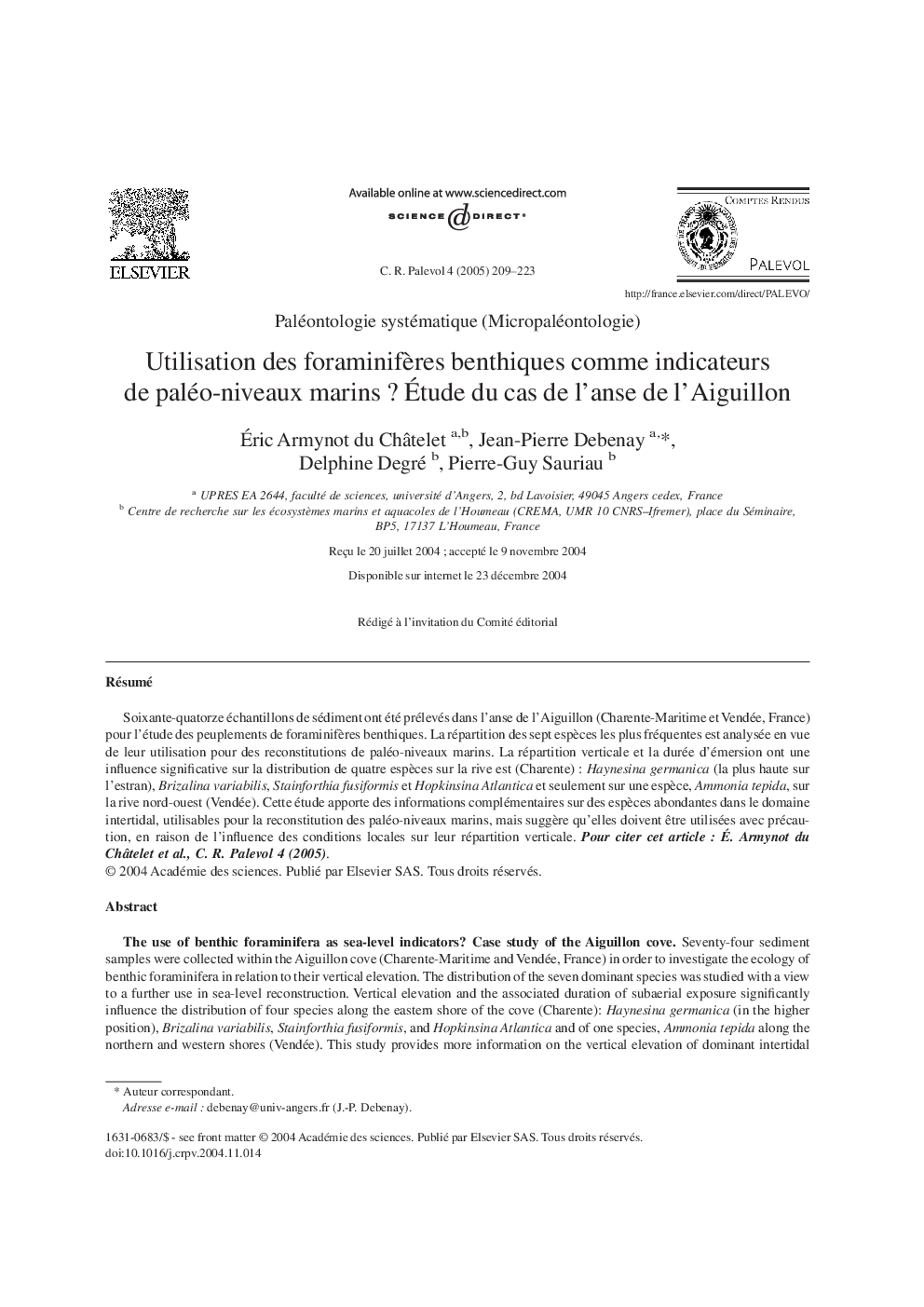| Article ID | Journal | Published Year | Pages | File Type |
|---|---|---|---|---|
| 9538833 | Comptes Rendus Palevol | 2005 | 15 Pages |
Abstract
The use of benthic foraminifera as sea-level indicators? Case study of the Aiguillon cove. Seventy-four sediment samples were collected within the Aiguillon cove (Charente-Maritime and Vendée, France) in order to investigate the ecology of benthic foraminifera in relation to their vertical elevation. The distribution of the seven dominant species was studied with a view to a further use in sea-level reconstruction. Vertical elevation and the associated duration of subaerial exposure significantly influence the distribution of four species along the eastern shore of the cove (Charente): Haynesina germanica (in the higher position), Brizalina variabilis, Stainforthia fusiformis, and Hopkinsina Atlantica and of one species, Ammonia tepida along the northern and western shores (Vendée). This study provides more information on the vertical elevation of dominant intertidal species, which may be used for reconstructing former sea levels. It suggests that their position may change, depending on local conditions, which requires great caution in using them as indicators of former sea levels. To cite this article: Ã. Armynot du Châtelet et al., C. R. Palevol 4 (2005).
Keywords
Related Topics
Physical Sciences and Engineering
Earth and Planetary Sciences
Palaeontology
Authors
Ãric Armynot du Châtelet, Jean-Pierre Debenay, Delphine Degré, Pierre-Guy Sauriau,
